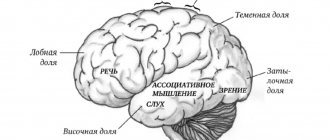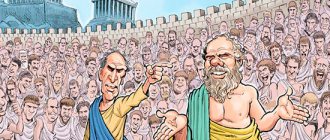Leadership theory appeared simultaneously with the beginning of the development of management as a separate science. In the 1920s, researchers began to create a number of theories that explain the emergence of leadership in various social groups: situational theory, behavioral theory, functional theory, integral theory, etc.
Many famous philosophers from Plato to Plutarch have tried to find common qualities that leaders possess. They were confident that the foundations of leadership lie in individual personality traits. Is it really? What does modern management theory say about leadership, and what does the emergence of informal leaders depend on?
Who is a leader?
In any team, group of people or society, the role of the leader comes to the fore. This is a person who exercises leadership functions (formally or informally) and enjoys the respect and trust of others. An informal leader does not have authority, but can have a more tangible influence on the actions of a group or team.
The “leader” must be separated from the “manager”. The main differences are as follows:
- the leader in the group plays the role of a regulator of interpersonal relations, while the leader acts as a regulator of official relations;
- leadership arises in the microenvironment, and the “leader” refers to the entire environment of social relations, i.e., the macroenvironment;
- the leader makes decisions according to a more complex scheme, including circumstances that are not relevant to a specific group;
- leadership may depend on the mood of the group (fickle).
Leadership cannot by itself replace management. The best option is to complement each other. When a team leader is a leader, he fulfills his authority and influences group members: sets goals, inspires, motivates. Otherwise, the leader may encounter resistance within the team - competing with the influence of the informal leader of the group.
Perseverance
Yes, this quality can also be developed! It is important to understand that there will always be obstacles and difficulties, this is our life. It is persistence that will help you not to give up, treat defeat as feedback and continue working. “Do what you can, with what you have, where you are” - remember this phrase of Theodore Roosevelt?
How to improve perseverance
BOOKS:
- Linda Kaplan Thaler, Robin Koval "True Grit. How to develop the qualities necessary to achieve success"
- Hardy Darren “Cumulative effect. From action to habit, from habit to outstanding results.”
VIDEO:
- Angela Lee Duckworth “ Grit: The power of passion and perseverance ” (translated into Russian)
FREE CLASSES:
- Skillsoft: “Resilience & Perseverance ” (course in English. Paid, but there is a trial period of 14 days - you can complete it in time. 10 books on the topic are also included).
QUESTIONS AND ASSIGNMENTS:
- Remember one of your significant achievements and write down what difficulties you encountered while moving towards implementation. How did you find a solution in each case? How significant do these problems seem now?
- Think about what inspires and motivates you? Make a list of what creates the right mood: music, movies and more. Turn to these things when you feel low.
- Train self-discipline: specifically set difficult tasks for yourself, fit into challenges, start running.
 Even simple decluttering, when you decide that it’s time to throw away things, trains willpower.
Even simple decluttering, when you decide that it’s time to throw away things, trains willpower. - Think about who among your loved ones can support you and become like-minded people? Tell these people about your successes, do not hesitate to praise yourself.
OTHER:
- Try the service for achieving goals Smart Progress : there you can practice setting and achieving goals, and also watch how other people solve similar problems and find like-minded people.
Leader-organizer
This leadership style is characterized by a good perception of the needs of the team. He takes active steps to protect the interests of the group and puts them on the same level as his own. Among the striking qualities of this type of leadership in psychology is the ability to convince people, motivate them, organize them to perform a specific task, and correctly distribute roles. If it is necessary to express disapproval of the actions of a member of the team, the leader-organizer does this without compromising self-esteem.
Such a personality and such a liberal leadership style always comes to the fore in informal groups.
Leader-Creator
The designated management and leadership style can inspire people, interest them in a new idea, and offer to take on a task that may seem impossible to other group members. Such a person always sees new things and easily takes on complex or even dangerous projects. His style of behavior is not to command, but only to invite to discussion.
The rest of the group will never say that the leader makes decisions alone. He always relies on interest, consults with the rest of the team, and presents his arguments to achieve the goals of the organization.
Ability to bear responsibility and share it with the team
The leader has to bear responsibility not only for himself, but also for the entire team. What makes a truly good leader and manager is that he shares responsibility, accomplishments, and blame equally. This is perhaps the most “stressful” leadership quality, but the larger a person’s area of responsibility, the larger his sphere of influence. Yes, you have to be responsible for your decisions, especially unpopular ones, defend team members and keep promises; As a reward, the leader receives trust from management and subordinates, and therefore freedom to find the most effective path to the goal. And this skill is not a given from above, it can also be developed!
How to level up responsibility
BOOKS:
- Nassim Nicholas Taleb, Risking Your Own Skin. The Hidden Asymmetries of Everyday Life"
- John Miller "5 Principles of Proactive Thinking"
- Bregman Peter “Emotional courage. How to take responsibility, not be afraid of difficult conversations and inspire others"
- Dalio Ray Principles. Life and work"
VIDEO:
- Rob Cook " The Cost of Work Stress and How to Reduce It "
- Simon Sinek " Why a Good Leader Makes You Feel Safe "
QUESTIONS AND ASSIGNMENTS:
- Get into the habit of the “one minute rule”: before reacting to a negative event, exercise self-control and wait 60 seconds. And before you speak yourself, listen to the other.
- Do you trust yourself? Think about which areas you don’t ask for advice from others, and which areas make you feel insecure and doubtful. Try to make choices in such areas on your own and observe the consequences, moving towards confidence.
- Think back to your big failures where you were held accountable. How did you cope with the consequences? How scary do they seem now? Think about what works best to help you cope with failure.
- Ask yourself: what depends on me and what doesn’t? Write a list of what is in your control right now and what you can control. Your attention should be directed to these aspects, since you cannot be held responsible for what is not in your control.
Leader-fighter
Leaders-fighters always stand out in the team for their qualities. They are confident in their strength and have an “iron” will. These types of leadership in management are characterized as individuals who do not hesitate to take on any task, regardless of its degree of complexity or danger. Wrestlers, by their nature, are not inclined to make concessions. They clearly follow the intended path and defend the decision made. Sometimes their actions can be described as “the madness of the brave,” since sometimes they do not have time to carefully think through the plan of action and foresee possible difficulties.
Types of leadership in psychology
Psychologists and psychoanalysts carefully study manifestations of leadership as the ability to evoke feelings of admiration, respect, trust and even adoration. Among group members, such feelings towards the leader arise unconsciously. Depending on the characteristics of the leader’s personality, the following types of leaders and leadership styles in psychology are distinguished.
- Autocratic. Characterized by quick and individual decision-making, and the leader’s strict power over the group. Shows best results in moments of crisis.
- Business. A leader takes on the role of leading a team to accomplish a specific task. Most often, these are ambitious people with clear motivation who want to move up the career ladder or in the social hierarchy and exhibit leadership qualities.
- Democratic. Democratic leadership style involves active participation in decision making for all group members. Democratic leaders are creative, inspiring, and concerned about creating optimal working conditions.
- Relationship-oriented leadership. The basis is support for team members, concern for their development and effectiveness. This leadership style encourages teamwork and successful collaboration.
- Serving. Characterized by managing people by providing them with assistance. The leader provides honest and reasonable leadership, similar to democratic leadership.
- Indifferent. It is characterized by providing group members with complete freedom of action, which is characteristic of groups of experienced, independent and proactive people.
- Problem-oriented. Aimed at performing a specific task. In this model, leaders perform the tasks of setting goals, developing methods for solving them, distributing responsibilities, and controlling.
- Charismatic. It is based on the inspiration of group members, awakening their enthusiasm. The leader's personality comes to the fore and his interests are placed first in relation to the interests of the group.
- Transformational. It is built on motivating the team to achieve 100% results. The leader focuses on the effectiveness of interaction between group members and takes care of the implementation of common goals and interests. In business, this model is considered the most successful.
Who is an anti-leader
An anti-leader is a person who is in power, but does not have the qualities that can force the crowd to act voluntarily for his interests. His behavior does not inspire respect, and his personality does not inspire sympathy.
The anti-leader stands still, is not ready to develop and change. He is confident in his own rightness and is not able to deviate from the original plan. He does not create his own behavioral strategy, but uses already tested methods. Such a person does not adhere to principles; he easily says one thing and acts differently, without taking into account the opinion of the group. For him, the main thing is that people support him and agree; their point of view is not of interest.
An anti-leader provokes conflicts with his behavior, does not monitor harmony in the team and does not want to reconcile the differences that arise. He does not try to support or help, does not provide explanations, or they are so brief that they are not useful. He simply gives out commands using a controlling approach, and may raise his voice or insult a team member.
Anti-leader
Leadership skills are necessary for a person to find support to achieve a goal. Not everyone can earn the respect and love of the team. Only a confident person who is able to listen and support those around him will earn authority. Constant self-improvement and the ability to think outside the box attract and create a desire to act in the name of a common goal.
Leadership styles in organizational management
In terms of the role of leadership in an organization, there are 3 types of leadership:
- Business leadership. The basis is the implementation of production tasks. The leader is competent in the professional field and demonstrates the following qualities: the ability to solve complex organizational problems, business acumen, and efficiency. This leadership style in innovation is based on experience and business authority.
- Emotional leadership. Implemented on the basis of human sympathies within the team. An emotional leader in a group, as a rule, inspires the trust of others, inspires confidence, and is able to relieve psychological tension in the team.
- Situational leadership. It appears unstable depending on the specific situation. May combine signs of emotional and business leadership. Example: organizing the removal of people from a building in case of fire.
Each classification of leaders, leadership styles and their characteristics has the right to life. Scientists continue to work in this area, so over time new species and types will appear.











